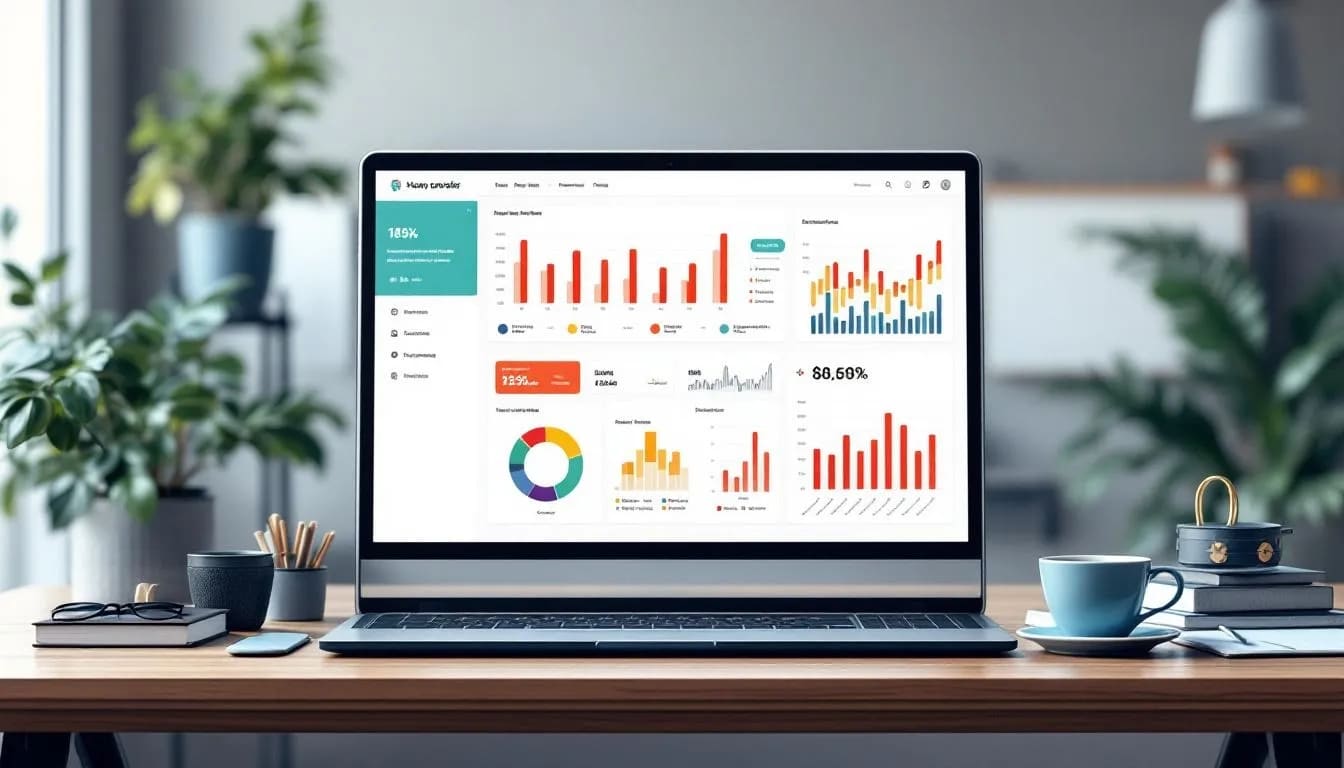Struggling to build high-quality video calling apps that work flawlessly across devices? If you’ve ever faced lag, connection drops, or troubled integrations, you’re not alone. WebRTC app development is reshaping how we create real-time communication platforms — offering low latency, peer-to-peer video capabilities without extra plugins. In this guide, I’ll walk you through everything you need to build robust, scalable video calling apps leveraging WebRTC technology.
Understanding Peer-to-Peer Video Communication
At the heart of WebRTC app development lies peer-to-peer video communication — a method where media streams flow directly between users instead of routing through centralized servers. This direct connection makes a world of difference for performance, latency, and scalability.
What Peer-to-Peer Video Means in WebRTC
In a typical video app, data travels from your device to a central server, which then relays it to the recipient. This indirect path adds extra hops, increasing delay and costs. With peer-to-peer video, WebRTC enables devices to establish direct links using the RTCPeerConnection API, allowing video, audio, and data to be shared directly.
How Direct Media Streams Bypass Servers to Enhance Speed
Once a connection is established through signaling (more on this later), WebRTC sets up an encrypted channel between devices. Media packets flow straight, bypassing servers entirely unless network constraints dictate otherwise. This reduction in nodes improves:
- Latency: Peer-to-peer calls can achieve latencies under 150ms, essential for natural conversations.
- Bandwidth efficiency: Avoids unnecessary routing and duplication.
- Scalability: Offloads media transmission demands from your backend infrastructure.
Benefits of Peer-to-Peer Over Traditional Video Relay Methods
Peer-to-peer video isn’t just faster; it’s more secure and cost-effective. Without relying on relay servers for every stream, you reduce operational expenses and avoid potential bottlenecks or points of failure. It’s especially beneficial for one-to-one calls or small groups where devices can directly negotiate connections.
However, peer-to-peer calls may struggle in certain network conditions (e.g., behind restrictive NATs or firewalls), requiring fallback methods like TURN servers — a topic we’ll cover in depth below.
Actionable tip: When building your WebRTC app, prioritize peer-to-peer connections first and implement fallback mechanisms only as needed to maintain call reliability and performance.
Role of Signaling Server in WebRTC App Development
While peer-to-peer media streams flow directly between users, the initial setup of these connections hinges on another critical piece — the signaling server. Understanding its role is fundamental for any WebRTC app development project.
What Signaling Servers Are and Why They’re Essential
A signaling server acts as a neutral third party responsible for exchanging metadata, session descriptions, and network information between peers before the actual media stream begins. This includes:
- Exchanging SDP (Session Description Protocol) offers and answers.
- Exchanging ICE (Interactive Connectivity Establishment) candidates for network traversal.
- Negotiating codecs, bandwidth, and media parameters.
Without signaling, two browsers cannot establish the direct peer-to-peer channel because they lack the necessary details about each other’s media setup and network environments.
Protocols and Technologies Commonly Used for Signaling
WebRTC itself does not mandate a specific signaling protocol, so developers have flexibility. The most widely used technologies in 2025 include:
- WebSocket: Real-time, full-duplex communication over a single TCP connection, ideal for bi-directional signaling.
- SIP (Session Initiation Protocol): More common in enterprise VoIP solutions, SIP may be integrated for interoperability.
- HTTP/2 or HTTP/3: Sometimes used for signaling in serverless or hybrid environments with polling fallback.
Many teams build custom lightweight signaling servers or leverage managed services that provide reliable, low-latency channels.
How Signaling Differs from Media Transport in WebRTC
It’s important to distinguish signaling from media transport. Signaling handles negotiation and session control over TCP or WebSocket connections at the application layer—but does not carry the video/audio data. The actual media path uses UDP-based protocols like SRTP (Secure Real-time Transport Protocol), which pass directly between peers (or via TURN servers as fallback).
Pro tip: Choose a signaling server technology that integrates seamlessly with your backend stack and can scale horizontally. Prioritize protocols with minimal overhead and support for your target network infrastructure.
Building Your WebRTC Video Calling App: Architecture and Components
Building a fully functional WebRTC app revolves around core APIs, signaling integration, and smart media handling. Let’s break down these components for practical implementation.
WebRTC APIs (getUserMedia, RTCPeerConnection, RTCDataChannel)
- getUserMedia:
This API grants access to the user’s camera and microphone. Allow users to control permissions for privacy compliance. - RTCPeerConnection:
The central API that establishes peer-to-peer connections and facilitates media transfer using ICE candidates and DTLS encryption for security. - RTCDataChannel:
Enables real-time data exchange (e.g., chat, file transfers) alongside video and audio streams, enriching app interaction.
Integration of Signaling Servers for Call Setup
Building signaling into your app involves:
- Establishing WebSocket connections at app start
- Exchanging SDP and ICE candidates as JSON messages between peers
- Handling connection states (offer, answer, candidate, hangup)
- Managing user presence and session lifecycle (join, leave)
Use libraries like Socket.IO or cloud services such as Firebase Realtime Database if you want pre-built signaling backends with real-time functionality.
Media Handling and Bandwidth Optimization Techniques
To provide smooth video quality across varying network conditions:
- Implement adaptive bitrate streaming using WebRTC’s built-in bandwidth estimation.
- Use codec prioritization — H.264 and VP8/VP9 are widely supported; AV1 is emerging in 2025 for better compression.
- Incorporate simulcast to send multiple video streams in different qualities, allowing receivers to switch dynamically.
- Detect and handle network changes in real-time, adjusting resolution and frame rate accordingly.
Developer tip: Leverage WebRTC’s stats API to monitor metrics like jitter, packet loss, and latency, feeding data back into your app for dynamic quality control.
Advanced Tips & Future Trends in WebRTC App Development
WebRTC continues to evolve, with exciting developments that developers should keep on their radar.
Leveraging TURN Servers for NAT Traversal and Fallback
Peer-to-peer connections can fail behind strict NATs or firewalls. TURN (Traversal Using Relays around NAT) servers act as a relay to route media:
- Deploy TURN servers close to user populations for low latency.
- Use open-source solutions like coturn or managed TURN services.
- Monitor TURN usage rates to optimize server costs and improve fallback efficiency.
Using AI and ML for Video Quality Enhancement
In 2025, AI-driven video processing can dramatically improve user experience:
- AI noise suppression improves call clarity.
- Machine learning algorithms optimize bitrate allocation based on real-time content analysis.
- Smart background blur or replacement enhances privacy without impacting performance.
Many cloud providers now offer WebRTC-compatible SDKs embedding these capabilities, streamlining integration.
Emerging Standards for Multi-party Video Calls and Mesh Networking
Scaling peer-to-peer beyond one-to-one calls introduces complexity:
- Mesh networks let each participant connect to every other, suitable for small groups but bandwidth heavy.
- Selective Forwarding Units (SFUs) relay selected media streams, balancing load.
- Multipoint Control Units (MCUs) mix streams server-side, reducing client workload but adding latency.
Standardization through protocols like WebRTC-NV (Next Version) and integration with WebTransport offer promising scalability improvements.
Forward-thinking tip: Architect your app to support hybrid models—starting simple with peer-to-peer and enabling SFU integration for larger calls—to future-proof your platform.
Conclusion
Building a video calling app with WebRTC app development is complex but rewarding. Understanding peer-to-peer video communication and deploying an efficient signaling server are critical steps to success. When you partner with experts like WildnetEdge, you gain access to proven solutions and deep technical knowledge that simplify development and accelerate time-to-market.
WebRTC enables you to build low-latency, scalable, and cross-platform video calling solutions that meet modern demands. Whether you’re targeting one-on-one chats or multi-party conferences, mastering these technologies lays the foundation for seamless user experiences now and into the future.
Ready to build better, faster video calling apps? Trust WildnetEdge to power your WebRTC ambitions with tailored services, robust infrastructure, and cutting-edge expertise.
FAQs
Q1: What is peer-to-peer video in WebRTC app development?
Peer-to-peer video enables direct media streaming between devices without routing through a central server, reducing latency and improving call quality.
Q2: How does a signaling server work in WebRTC applications?
A signaling server manages session initiation by exchanging connection metadata and network information between peers before establishing a media stream.
Q3: What are the key components needed for WebRTC app development?
Core components include WebRTC APIs for media capture and connection, signaling servers for session management, and optional TURN servers for network traversal.
Q4: Can WebRTC handle multi-party video calls?
Yes, though it requires more complex architecture like mesh networks, selective forwarding units (SFUs), or multipoint control units (MCUs) to manage multiple streams effectively.
Q5: Why choose WildnetEdge for building WebRTC apps?
WildnetEdge offers expert guidance, scalable infrastructure, and custom development that simplifies WebRTC integration and ensures reliable video call performance.

Nitin Agarwal is a veteran in custom software development. He is fascinated by how software can turn ideas into real-world solutions. With extensive experience designing scalable and efficient systems, he focuses on creating software that delivers tangible results. Nitin enjoys exploring emerging technologies, taking on challenging projects, and mentoring teams to bring ideas to life. He believes that good software is not just about code; it’s about understanding problems and creating value for users. For him, great software combines thoughtful design, clever engineering, and a clear understanding of the problems it’s meant to solve.
 sales@wildnetedge.com
sales@wildnetedge.com +1 (212) 901 8616
+1 (212) 901 8616 +1 (437) 225-7733
+1 (437) 225-7733































